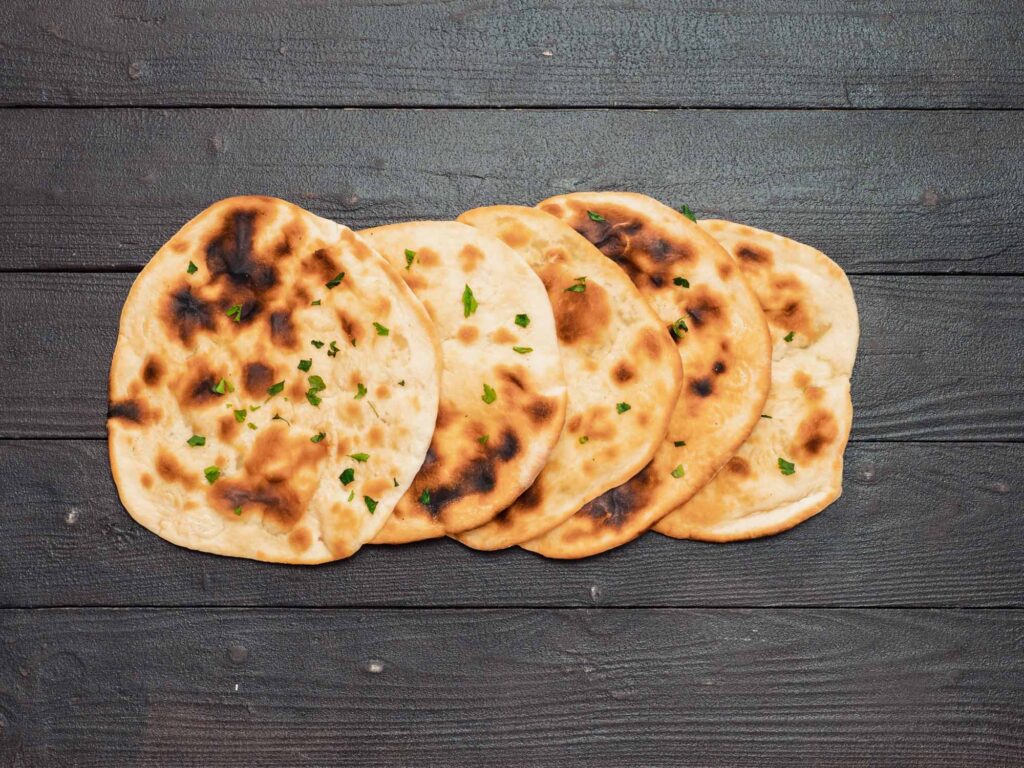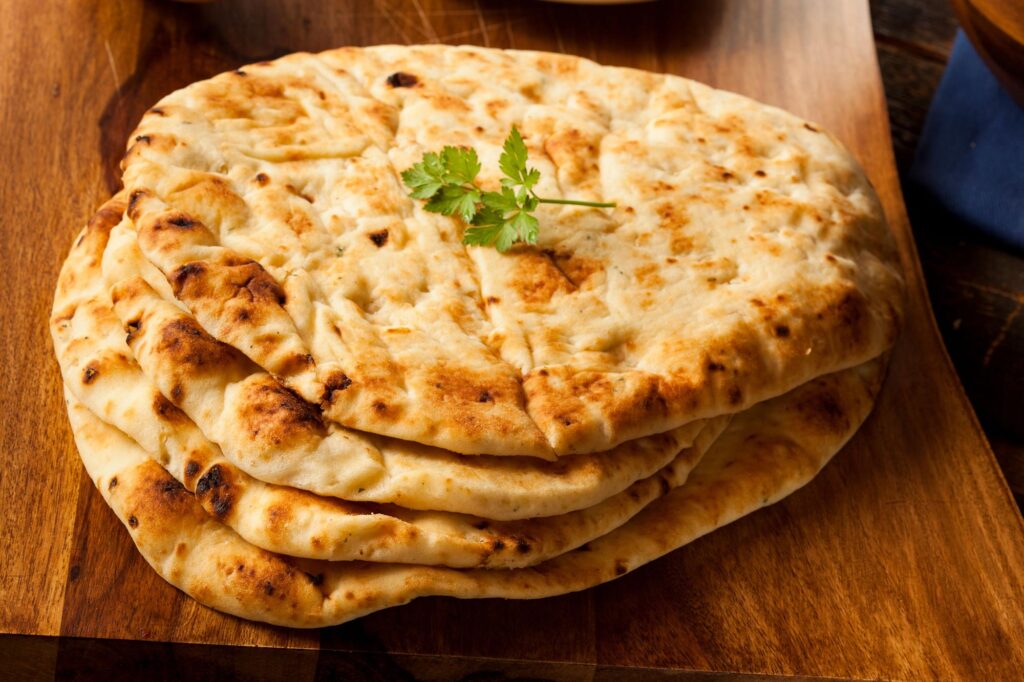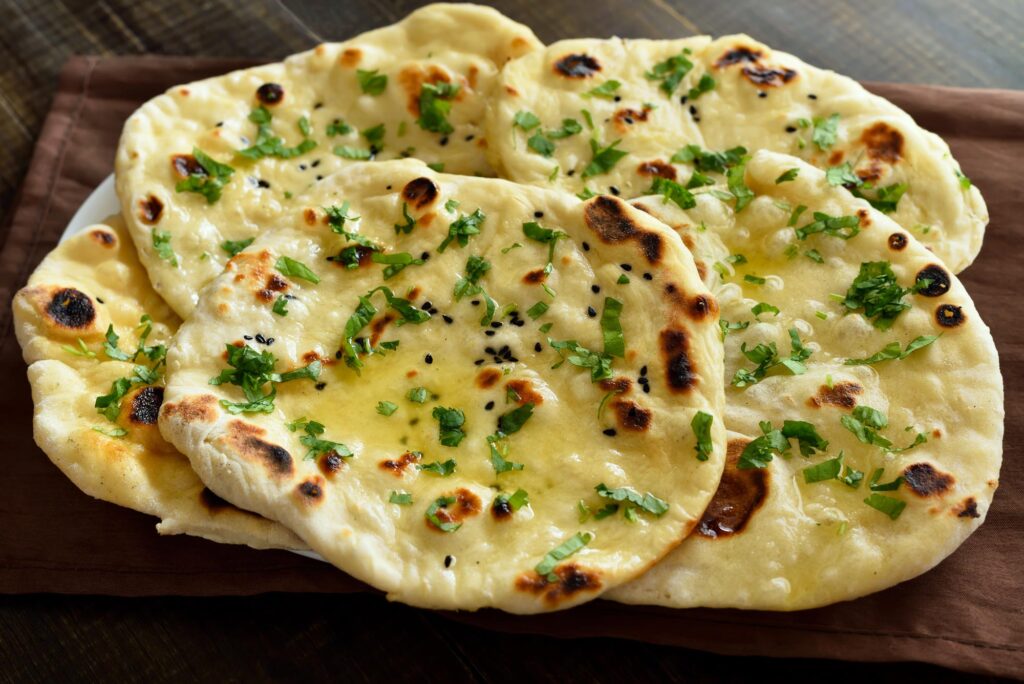Master the art of homemade naan with this easy recipe guide. Learn professional techniques from Rajput Indian Cuisine to create restaurant-quality, soft and fluffy naan bread at home using simple ingredients. Perfect for pairing with your favorite Indian curries and dishes in just minutes.
Nothing compares to the aroma of freshly baked naan wafting through your kitchen. This beloved Indian flatbread, with its characteristic soft texture and slightly charred spots, has captured hearts worldwide. While many believe authentic naan requires a traditional tandoor oven, you can achieve restaurant-quality results right in your home kitchen.
Understanding Traditional Naan Bread
Naan originated in the royal kitchens of the Mughal Empire and has been a staple of Indian cuisine for centuries. This leavened flatbread differs from other Indian breads like roti or chapati due to its use of yogurt and yeast, which creates its signature fluffy texture and tangy flavor profile.
Key characteristics of perfect naan:
Essential Ingredients for Homemade Naan
The beauty of naan lies in its simplicity. You likely have most ingredients in your pantry already:
Basic Naan Ingredients:
The yogurt serves multiple purposes – it adds tenderness, creates the characteristic tang, and helps achieve that coveted soft texture. Greek yogurt works exceptionally well due to its thick consistency and lower water content.

Step-by-Step Naan Making Process
# Preparing the Dough
Start by activating your yeast in warm water with sugar. This process, called proofing, ensures your naan will have the proper rise and texture. The mixture should become foamy within 5-10 minutes.
Combine flour and salt in a large mixing bowl. Create a well in the center and add the activated yeast mixture, yogurt, and oil. Mix until a shaggy dough forms, then knead for 8-10 minutes until smooth and elastic.
Pro Tips for Perfect Dough:
# The Fermentation Magic
Place your kneaded dough in an oiled bowl, cover with a damp cloth, and let it rise in a warm spot for 1-2 hours. This fermentation period develops the complex flavors and creates the gas bubbles that make naan light and airy.
For faster results, place the bowl in a slightly warm oven (turned off) or near a sunny window. The dough should double in size during this time.

Cooking Techniques for Restaurant-Quality Results
# Stovetop Method
Heat a cast-iron skillet or heavy-bottomed pan over medium-high heat. Roll each portion of dough into an oval shape, about ¼ inch thick. The irregular, hand-stretched shape is part of naan’s authentic charm.
Cook each naan for 1-2 minutes until bubbles form on the surface, then flip and cook for another 1-2 minutes until golden spots appear. Brush with melted butter or ghee immediately after cooking.
# Oven Method for Multiple Naans
Preheat your oven to its highest setting (usually 500-550°F) with a pizza stone or inverted baking sheet inside. This mimics the intense heat of a tandoor oven.
Stretch the dough and place it directly on the hot surface. Bake for 2-3 minutes until puffed and lightly charred. This method allows you to cook multiple naans simultaneously.
Flavor Variations and Toppings
Transform basic naan into gourmet creations with these popular variations:
Storage and Reheating Tips
Fresh naan tastes best immediately after cooking, but you can store leftovers effectively:

Troubleshooting Common Naan Problems
Dense or Heavy Naan: Usually indicates insufficient yeast activity or inadequate rising time. Ensure your yeast is fresh and active.
Tough Texture: Over-kneading or using too much flour can create tough naan. The dough should remain slightly sticky.
Lack of Flavor: Proper fermentation time is crucial for developing the characteristic tangy taste. Don’t rush the rising process.
Pairing Your Homemade Naan
Naan serves as the perfect vehicle for enjoying rich Indian curries, dal, and tandoori dishes. Its neutral flavor and sturdy texture make it ideal for scooping up sauces and gravies.
Consider serving alongside:
Master the Art of Indian Bread Making
Creating perfect naan at home connects you to centuries of culinary tradition while filling your kitchen with incredible aromas. With practice, you’ll develop the intuitive feel for dough consistency and cooking timing that separates good naan from exceptional naan.
The satisfaction of pulling warm, fluffy naan from your own oven rivals any restaurant experience. Start with this basic recipe, then experiment with flavors and techniques to make it uniquely yours.